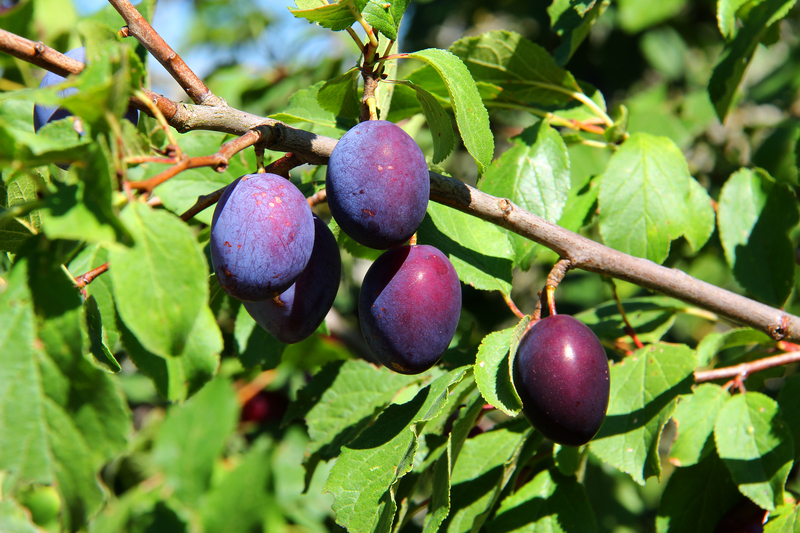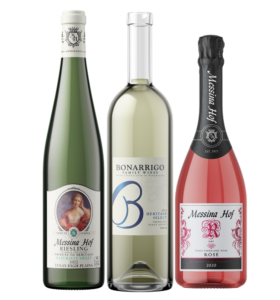
Did You Know?
Plums (Prunus subgenus Prunus) are related to a very large family of stone fruits including peaches, nectarines, apricots, cherries, and almonds (we eat the seed, not the flesh of the almond}. Botanically, the fruit is known as a drupe. Plums are thought to be one of the earliest domesticated fruits to be cultivated along with olives, grapes, and figs. Plums are also related to members of the rose family and produce an abundance of white, sweet-smelling flowers that bees love.
Types of Plums
There are native North American plums which can be quite ornamental, but most have relatively small and tart fruit best suited for jams and jellies. Many European varieties are free stone – the flesh easily separates from the stone – making them the best choice for dried plums (prunes). Sadly, most European varieties don’t do well in our area. Asian and Asian – American cross plums are the varieties most often grown for fresh fruit and will do best in our area especially if grafted to native rootstock. Most plum varieties are not self-fruitful and require another variety to pollinate and set fruit. Chill hours are very important in determining which plums will do well in any climate. For our area, Methley (self-fruitful), Bruce, Burbank and Santa Rosa usually do well.
When to Plant
Plum trees are deciduous (dormant in winter) and best planted in late fall through winter giving the roots the longest time to get established before the stress of summer sets in. Plums are usually pruned to an open scaffold shape. Young unbranched trees should be cut back to about 30 inches to encourage initial branching at that point. Trees that already are branched should be pruned to remove all but 3 to 4 main scaffold branches. Pruning will continue every year to maintain an open vase-like shape.
Harvest and Storage
It is best to remove all fruit from the youngest trees to encourage the tree to focus growth on leaves, roots, and branches. In subsequent years fruit should be thinned to a 3 to 4 inch spacing. Often this will require removing 80% or more of the immature fruit as plums tend to highly over fruit. Leaving too much fruit on the tree can result in very small fruit, broken limbs and damage to the trees’ health. Allowing the fruit to fully ripen on the tree results in the highest sugar content as well flavor. Fruit color as well as softness are indicators of ripeness. Taste testing specific varieties will further define the best time to harvest. Plums that are not fully ripened can be stored at room temperature to complete ripening. Fully ripened fruit can be stored in the refrigerator for up to a week. For long term storage, pitted plums can be frozen, dried, or made into preserves. Plum wine is also an option if you have an abundance of fruit.
By: Michael Vidrine
Wine Pairings for Dishes with Plums
as recommended by Karen Bonarrigo & Merrill Bonarrigo
3 Mistakes to Avoid when Pairing Wine with Asparagus:
- Asparagus has an acid that can produce sulfur compounds. It is strong and can clash with wine. Use wines that are light, delicate, and low in tannic acid.
- Rich egg-based sauces can cover the strong flavors and make the asparagus more compatible with heavier wines. Try to avoid acidic sauces unless you have the egg-based sauce.
- Overly sweet wines will overcome the asparagus and mute the flavors.
- Recommended wines:
- Messina Hof Bonarrigo White
- Messina Hof Sparkling Rose’
- Messina Hof Riesling (and most Messina Hof wines with Green Coded labels)

Merrill and Karen Bonarrigo, Wine and Food Pairing experts at Messina Hof Wine Cellars, Inc.
